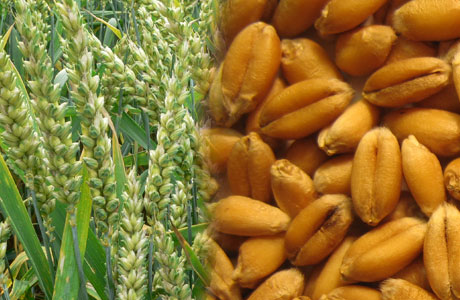Options for wheat policy
By: Dr Faisal Abbas | Dr Khalid Mushtaq
 The recent increase in the support price of wheat by the PML-N government from Rs1200 to Rs1300 has aroused keen interest of analysts and researchers as the countryís agrarian economy is primarily a wheat economy.
The recent increase in the support price of wheat by the PML-N government from Rs1200 to Rs1300 has aroused keen interest of analysts and researchers as the countryís agrarian economy is primarily a wheat economy.
Wheat is a staple food of the people and thus occupies a central position in framing agricultural support price policy. The crop contributes 13.1pc to value added in agriculture and 2.8pc to the GDP. It is cultivated on 52.7pc of total cropped area, accounts for 65pc of total food grain production and provides 72pc of calories and protein in an average diet. Per capita wheat consumption in Pakistan is 98.4kg per year.
Though, Pakistan is Asiaís third largest wheat producer, it remains a net importer of wheat due to lack of investment, inefficiency and sustained population increase.
Owing to budgetary constraints, it is not prudent to fill the total gap between supply and demand through only price support policy; but at the same time, it is also important to consider the distribution of benefits among consumers and producers.
Using the right combination of the policy options i.e. free market, input and import subsidy or price support, the government can meet the required policy objective of benefiting consumers as well as producers. It is necessary for the government to choose an optimal combination of the available alternative policy options.
It is empirically estimated by this author and colleagues in a research paper that when import and input subsidy are combined, producerís loss decreases continuously with the increase in input subsidy component. The cost to the government is increasing with the increase in input subsidy and the fall in import component. By combining price support and import subsidy option it is estimated that producerís gain increases with the decrease in import subsidy and increases in price support whereas the cost to the government rises continuously.
The net benefit to the society remains negative for all combinations of import subsidy of wheat and price support. Producerís gain and government cost rises as the share of price support increases.
Net benefit and the rate of return for each policy option decrease with the increase in price support component. However, if the preference is to take care of other groups in the society as well, then the best policy option is to combine support price and input subsidy components in the ratio of 10 and 90.
When all the three alternatives i.e., import subsidy, input subsidy, and price support are combined in different proportions the optimal net benefit to the society is observed under a policy where import subsidy and price support is 10pc each and input subsidy component is 80pc.
The producerís gain under this option is also higher than any previous combination and cost to the government is relatively less. This is one of the best alternative policy options for government.
The appropriate combination of alternative policy options depends on the welfare function. In the short-run, the best policy is the combined policy i.e., when input subsidy and price support contributes 90 and 10pc respectively, because it generates maximum net returns to the society.
The input subsidy can be selected as a second-best option for short run because of positive net return as compared to import subsidy and prices support option.
Thus, it is not prudent to fill the total gap between supply and demand through price support policy only; but at the same time, it is also important to consider the distribution of benefits among consumers and producers.
This problem can be handled with the help of a combined policy option by selecting the most desirable combination of the alternative policy options.
November, 2014
Source: Dawn News